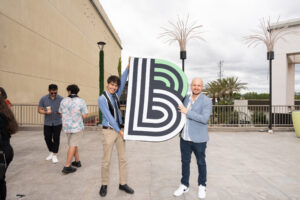In June 2010, some of the most prominent names in business and philanthropy—Warren Buffett and Bill and Melinda Gates—called the world’s billionaires into action. They proposed what’s become known as the Giving Pledge, a campaign that asks the mega-rich to donate at least half of their wealth to any charitable cause during their lifetime or as part of their estate.
The response was impressive. In just 10 months, 81 names committed to the pledge, equating to a minimum of $40 billion earmarked for philanthropy. By December 2015, more than 140 millionaires and billionaires joined the cause. Forbes Magazine surveyed the statements shared by those who have made the pledge and those on its list of America’s Top 50 Givers: The survey revealed that almost 80 percent cited major social change as a top concern for philanthropy.
The problem is that their actions do not match their statements. Research shows that top-tier donations (gifts of $10 million or more) do not go to social change makers at all. In fact, according to the Stanford Social Innovation Review, more than 80 percent of the high-dollar gifts given between 2000 and 2012 went to institutional organizations, such as universities and hospitals, rather than social ones.
I hate to break it to you, but a $10 million donation to increase Harvard’s endowment doesn’t have nearly the same impact as a similar gift to an institution aimed at social betterment.
To be clear, I am not suggesting that every social organization can handle a $10 million donation. Of the 1.5 million American nonprofits, about 40,000 have a budget in excess of $1 million. Within that subset, only a quarter manage budgets of more than $10 million. It’s obvious that large gifts need to be supported by a team that has experience maximizing the potential of such a significant donation.
For an organization to be ready for such a gift, it not only needs to have a clear mission, but can communicate its demonstrated impact through data. These facets encompass qualitative goals for the future as well as quantitative analysis about its history. Organizations need to be armed with strong leadership that donors can trust to continue the integrity of the programs and utilize their funds effectively.
But for those of us who have the infrastructure to deploy game-changing gifts, the question arises: What are we doing wrong? How can social impact organizations attract these types of philanthropists? How can we bridge this gap with philanthropists who claim social change is the No. 1 priority?
On the receiving end, it’s important to social impact organizations that donors understand what we’re trying to achieve with their money and how we are going to track and measure the results along the way. We should set goals together—whether that’s to serve more people than current resources allow or to dive deeper within existing programs.
Donors should also know we want to have an upfront conversation about expected results. Because a major gift is an investment in change, you should feel you have made a significant difference. Social change involves people on the receiving end, an understanding has to be reached that results take time. These conversations about evaluating outcomes are necessary, especially in the event of under or over-performance.
We recently had a multiyear, seven-figure grant that allotted a stipulated amount per new child served. I knew we would blow the projection out of the water; we were ready for a grant like this. However, I didn’t think the family was, so I was upfront with them about the projection and encouraged a ceiling of what they would fund. I think they appreciated when we have hit year-five metrics by the end of year 2, and hopefully we have developed a life-long donor.
Most of all, we want philanthropists to remember that their gifts are an investment in change, entrusted to competent people on the receiving end. Trust is the key ingredient to any successful relationship, especially one as significant as this.
Game-changing gifts are rare occurrences, and many that could happen, don’t. Let’s continue the conversation about maximizing philanthropy within the social realm and together, make some change.
To learn more about how you can support social impact, visit ocbigs.org.
—Melissa Beck, CEO of Big Brothers Big Sisters of Orange County and the Inland Empire
(Illustration by Christian Montenegro, Stanford Social Innovation Review)




